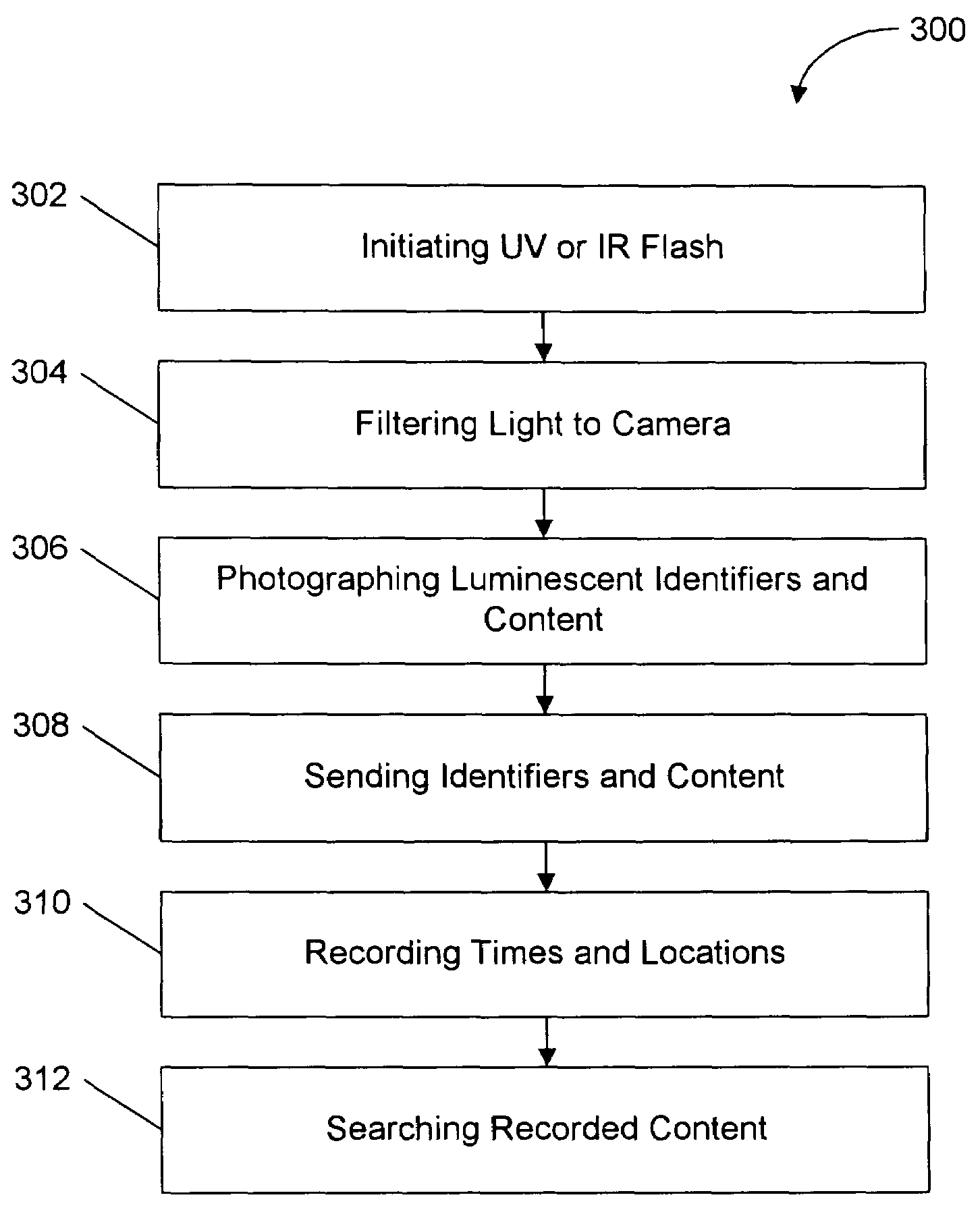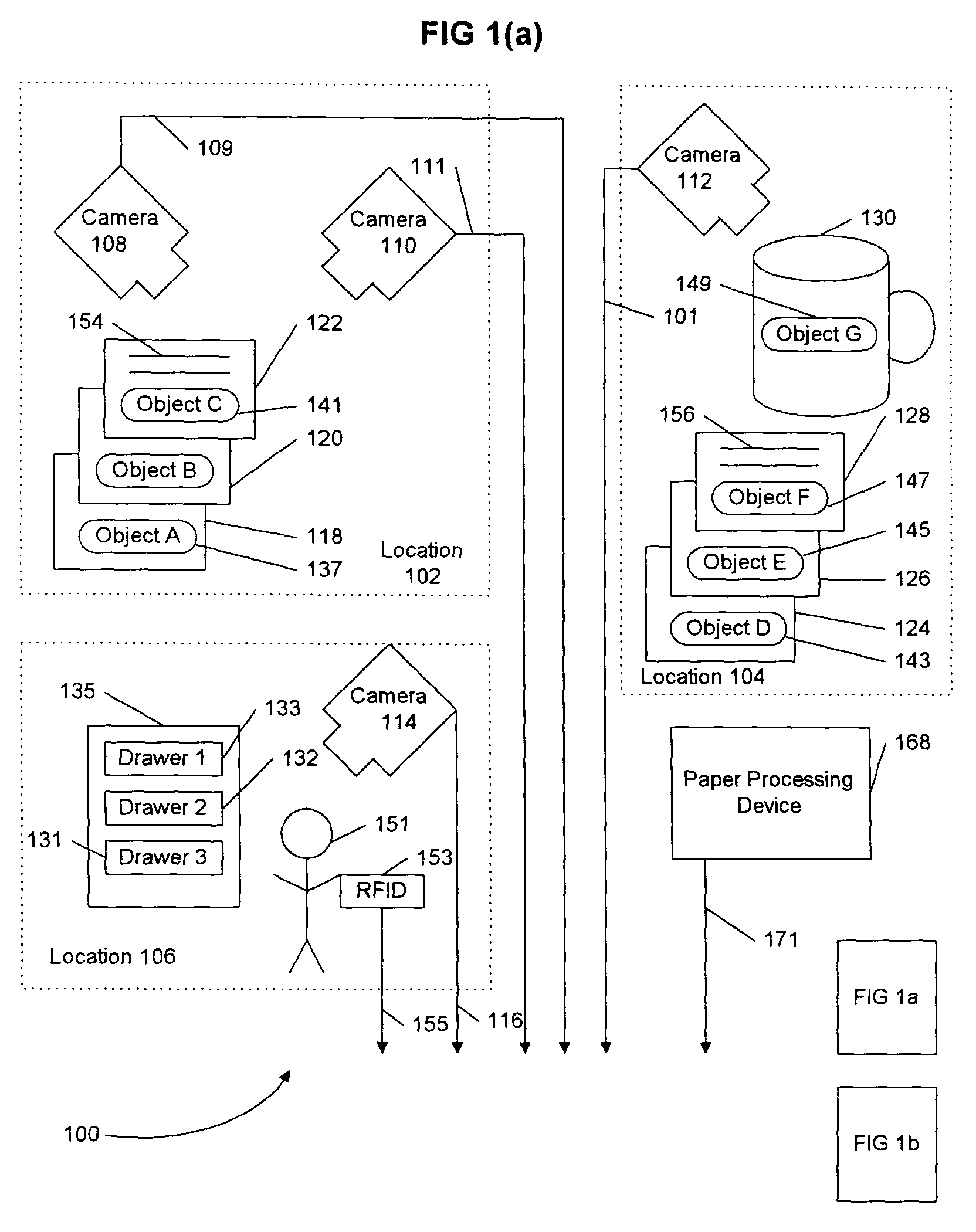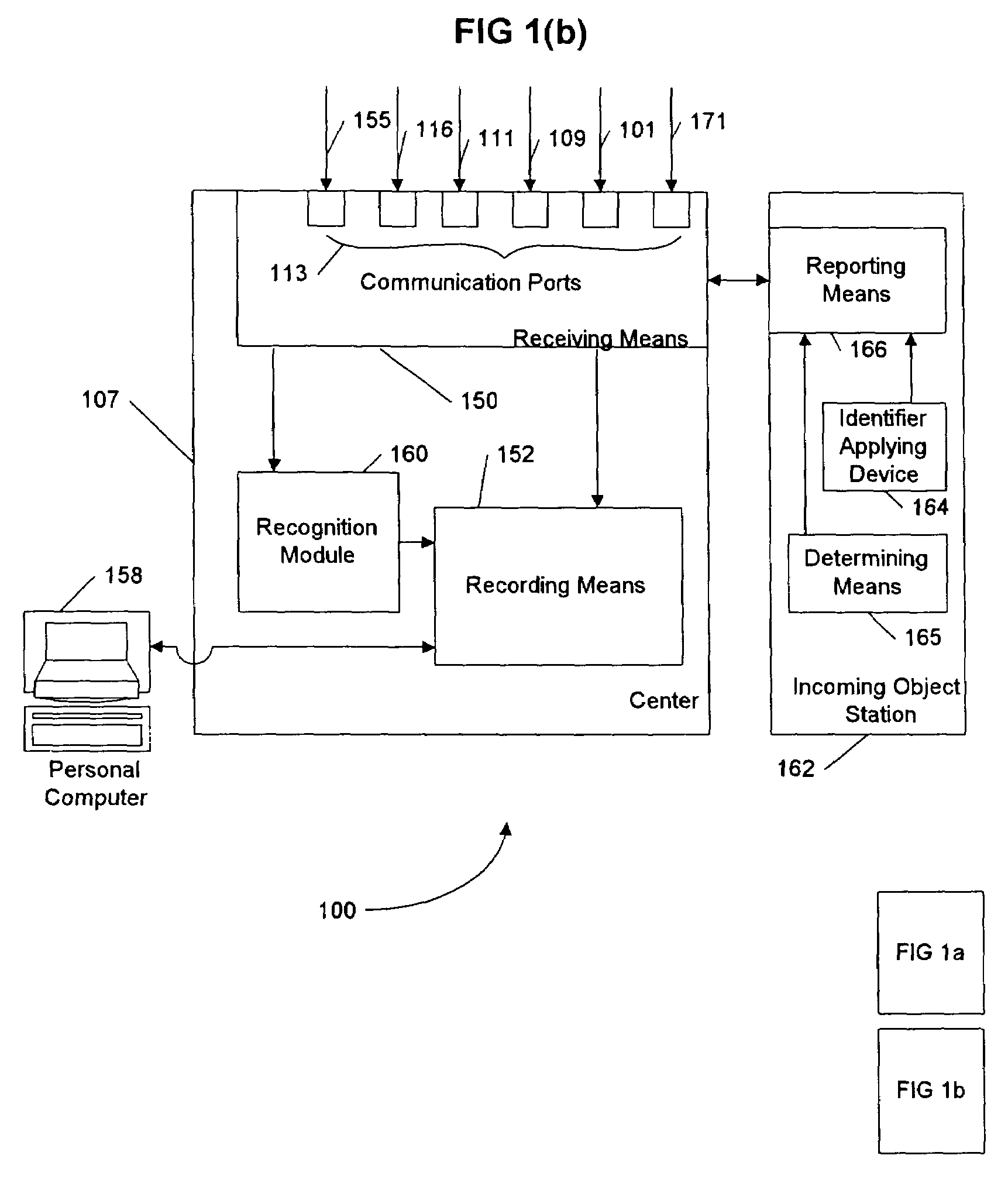System and method for tracking positions of objects in space, time as well as tracking their textual evolution
a technology of space and time, applied in the field of camera monitoring systems, can solve the problems of not being able to empower users to use physical objects, not being able to access remotely or through a network, and bulky electronic attachments, etc., and achieve the effect of improving computing capacity and increasing the ability to loca
- Summary
- Abstract
- Description
- Claims
- Application Information
AI Technical Summary
Benefits of technology
Problems solved by technology
Method used
Image
Examples
Embodiment Construction
[0019]This invention was inspired by considering how one could use an infinite army with infinite speed and memory to help with document management, without being invasive or placing demands on the user. This virtual electronic “army” simply watches everything, so it can tell you where documents are, where they came from, and what has ever been associated with or said about them. The challenge is to accomplish this in an efficient way, with minimal, negligible or no invasion of privacy that might have any resemblance to “Big Brother.” See the novel 1984 by George Orwell, c. 1949.
[0020]Each physical object to be observed is recognized by its visible or sometimes-visable properties, possibly in conjunction with its trajectory through space,time, which comprise a unique identifier. The position of each object in the system is tracked with video or still cameras so that two objects that look similar, and that may be only partially seen by the cameras, can be distinguished simply by conn...
PUM
 Login to View More
Login to View More Abstract
Description
Claims
Application Information
 Login to View More
Login to View More - R&D
- Intellectual Property
- Life Sciences
- Materials
- Tech Scout
- Unparalleled Data Quality
- Higher Quality Content
- 60% Fewer Hallucinations
Browse by: Latest US Patents, China's latest patents, Technical Efficacy Thesaurus, Application Domain, Technology Topic, Popular Technical Reports.
© 2025 PatSnap. All rights reserved.Legal|Privacy policy|Modern Slavery Act Transparency Statement|Sitemap|About US| Contact US: help@patsnap.com



